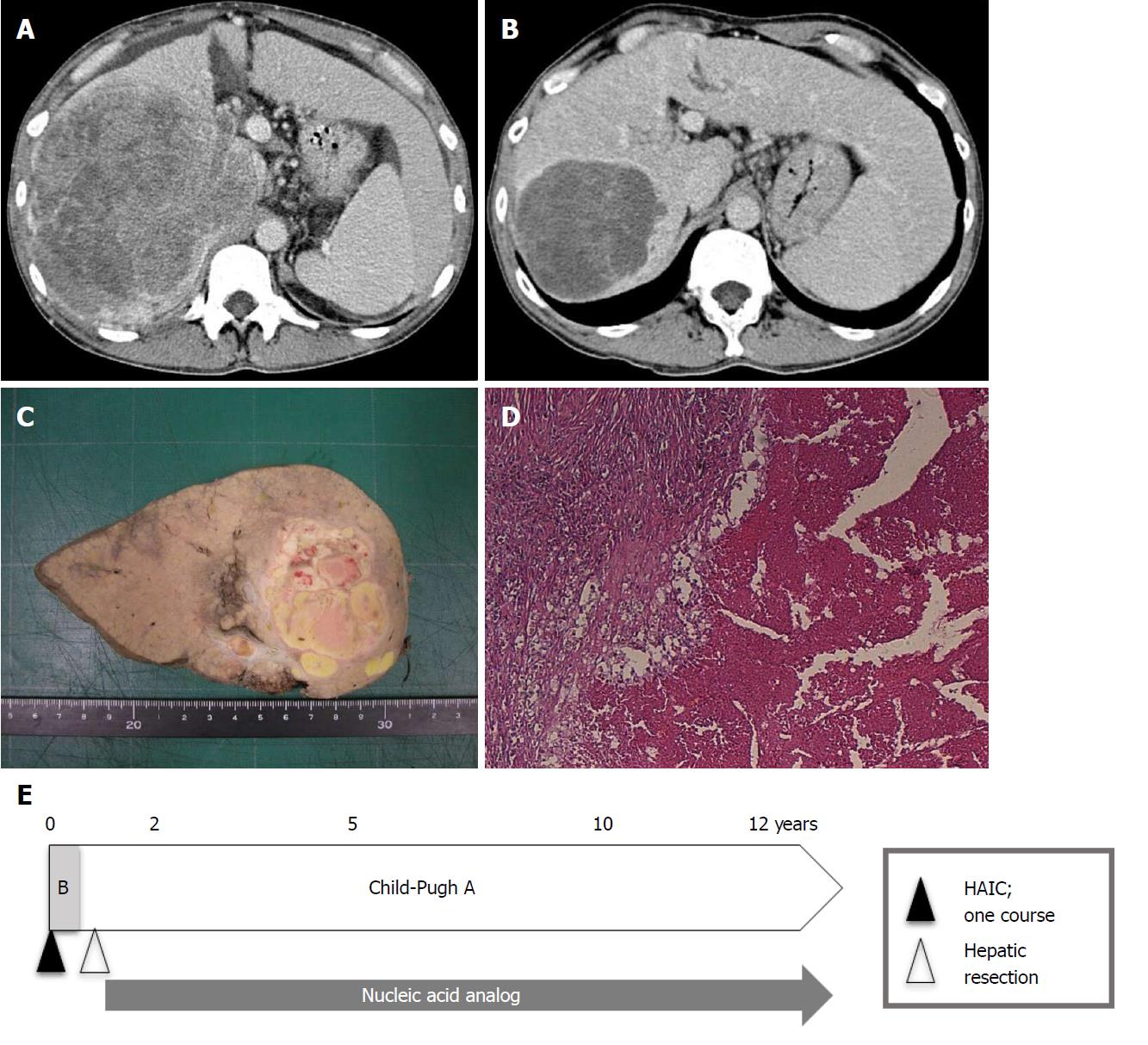Copyright
©The Author(s) 2018.
World J Hepatol. Sep 27, 2018; 10(9): 571-584
Published online Sep 27, 2018. doi: 10.4254/wjh.v10.i9.571
Published online Sep 27, 2018. doi: 10.4254/wjh.v10.i9.571
Figure 2 Patient with complete response treated with hepatic arterial infusion chemotherapy using low-dose cisplatin combined with a 5-fluorouracil (low-dose FP)-based regimen.
A: This 44-year-old man had massive hepatocellular carcinoma (HCC) (16 cm in diameter) with tumor thrombosis in the right portal vein (Vp3) and the inferior vena cava (Vv3) on dynamic computed tomography; B: After one course of hepatic arterial infusion chemotherapy (HAIC), the liver tumor markedly decreased; however, as slight tumor vascularity remained, the patient was assessed as having partial response at that time; C, D: Three tumor markers [alpha-fetoprotein (AFP), des-γ-carboxyprothrombin (DCP), and AFP L3] decreased after HAIC (AFP from 7145 ng/mL to 12.7 ng/mL, DCP from 233460 mAU/mL to 51 mAU/mL, AFP L3 from 58.1% to 3.1%). The patient’s Child-Pugh classification improved from B (8 points) to A (5 points). Thus, hepatic resection was performed, and histological findings showed no viable tumor cells (C, D). Finally, the patient was considered to have a complete response; E: The patient has been treated with nucleic acid analogs after the operation, and Child-Pugh A has been maintained. The patient is alive without HCC recurrence 148 mo after HAIC treatment.
- Citation: Saeki I, Yamasaki T, Maeda M, Hisanaga T, Iwamoto T, Fujisawa K, Matsumoto T, Hidaka I, Marumoto Y, Ishikawa T, Yamamoto N, Suehiro Y, Takami T, Sakaida I. Treatment strategies for advanced hepatocellular carcinoma: Sorafenib vs hepatic arterial infusion chemotherapy. World J Hepatol 2018; 10(9): 571-584
- URL: https://www.wjgnet.com/1948-5182/full/v10/i9/571.htm
- DOI: https://dx.doi.org/10.4254/wjh.v10.i9.571









